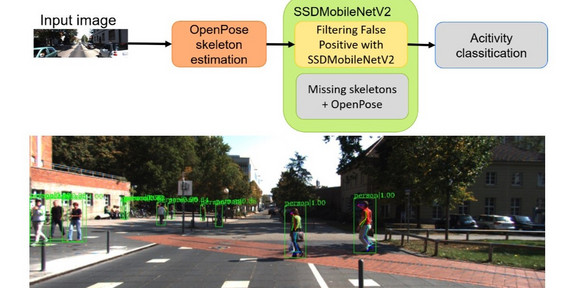Extending skeleton tracking for pedestrian activity recognition by object detection for filtering erroneous estimates

Pedestrians are the weakest road users. Despite technological development, the number of pedestrians injured and killed has remained almost constant in recent years. Accidents are often caused by pedestrians crossing the road carelessly, or by drivers misjudging the situation or overlooking the pedestrian. To change this, detection and warning systems must predict the path and intention of pedestrians.
To predict the intention of pedestrians, skeleton tracking methods are applicable, as they can provide information about the current and subsequent activities of the persons. However, conventional methods have limitations in tracking people on data used for automated driving research. In some cases, skeletons in objects, such as street signs or parts of buildings, are detected.
To counteract this weakness, additional person detection can be applied using neural networks. The detector is used to filter out incorrect skeletons.

![[Translate to English:] [Translate to English:]](/storages/zentraler_bilderpool/_processed_/8/b/csm_Kopfbild_Orga_Luftbild_9523d53350.jpg)